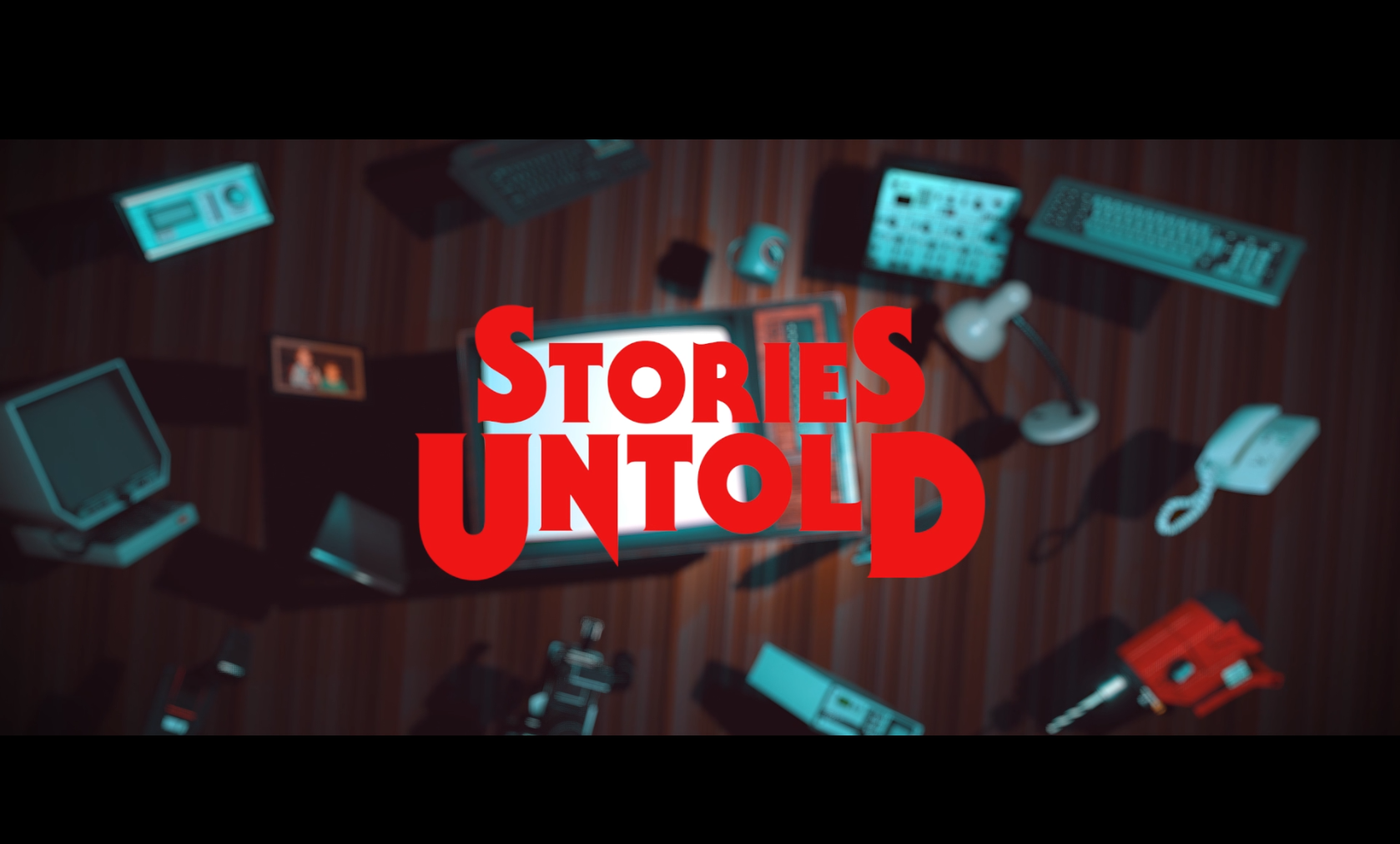Stories Untold is an interactive horror story told in four parts. Each episode places the player in a new environment with its own style of gameplay, mainly using point-and-click and text-based interfaces.
Set in 1986, the majority of the gameplay involves interacting with dated equipment in fairly mundane settings. However, by the midpoint of each chapter, things take a turn for the weird and spooky as the relatively innocent atmosphere shifts to emit a more sinister air.
Most of the game involves sitting in front of a computer terminal, inputting some form of data. This data includes the commands for a text-based game played in a bedroom, input from scientific experimentation being performed in a lab, and information relay from an Arctic weather station.
Since, for the PC version of the game, you are actually sitting in front of a computer and using your keyboard to interact with the in-game terminal, it creates an immersive effect as you are pulled into the world of the game.

More about playing around with old equipment than about completing puzzles.
Although Stories Untold can also be considered to be a puzzle game, the puzzle aspect mainly involves figuring out how everything works. If you're already familiar with the systems being used in the game, the game becomes less of a puzzle and more about task completion.
If you're unfamiliar with text-based games, it may take a while to learn what types of commands the game will accept, which could be frustrating for anyone new to the genre. This frustration can be somewhat alleviated in the console version of the game, which uses a word bank for input rather than direct input via a keyboard. However, it comes at the cost of part of the immersive effect created when using a computer to play the game.
Most of what is not a text-based adventure game consists of following directions to operate equipment in specific situations (namely, as someone assisting with a scientific experiment and as someone performing information relay based on prompts transmitted by radio). In these parts of the game, you're provided with an instruction manual explaining what to input when operating the equipment. However, the final episode pulls together everything used in the game up to that point and instruction manuals are no longer provided, so players who take long breaks between each episode may have some difficulty in the final episode if they don’t remember how the equipment works.

Excellent atmosphere unfriendly to anyone with light sensitivity or a history of epilepsy.
One of the strengths of Stories Untold lies in its excellent atmosphere. Using both subtle and obvious visual changes to each scene as well as a variety of high-quality and well-timed sound effects to create shifts in the overall mood of the tale, the game manages to build up an aura of suspense throughout each chapter. However, this use of visuals and audio can also be a negative for some gamers.
Two of the episodes have flashing lights that can be disarming for any gamer (which is likely the point) and downright harmful for anyone with light sensitivity or a history of epilepsy. Though many games are structured in a way that makes it possible to look away when there is flashing on the screen, one of these episodes requires the player to stare at the screen during the flashing in order to complete the puzzle.
Another section of the game requires the player to process audio information in order to progress. Although there are captions available throughout the game, they are not provided for this segment, making completion of the game difficult to impossible for players who are hard of hearing.

Short and intense with limited replay value.
Stories Untold is not a particularly long game. Each episode is around half an hour to an hour in length, making it possible to complete the entire game within three hours even when taking the time to enjoy the atmosphere. Although the plot isn't overly complicated, the presentation is wonderfully done, giving just enough hints that it's possible to guess at the story by observing the small details scattered throughout each chapter before being given the final reveal in Episode 4. To me, the whole game felt very much like slowly playing out a Twilight Zone episode.
There is a sense of mystery throughout each episode as you’re put into each situation with no explanation as to what you’re doing there and have to use hints from the dialogue and visuals to try and determine what exactly is going on. Once you’ve completed the story, all is revealed. So, although it could be fun to play through once more in order to catch anything you may have overlooked the first time, there isn’t much value in playing the game again beyond that.
That being said, the production value is high, and if you enjoy atmospheric games with a subtle air of suspense, it can be well worth the price, especially if you catch it during a sale.
Quick Reference:
Stories Untold is an interactive horror story told in four parts.
For full immersive atmospheric effect, this game is best played with mouse and keyboard in a poorly-lit room at night.
Strengths:
• Intriguing plot.
• Delightfully creepy atmosphere.
• Nostalgia for text-based adventure games and equipment such as microfilm readers.
Weaknesses:
• Short with limited replay value.
• No accessibility options for players with difficulty hearing, light sensitivity, or a history of epilepsy.


